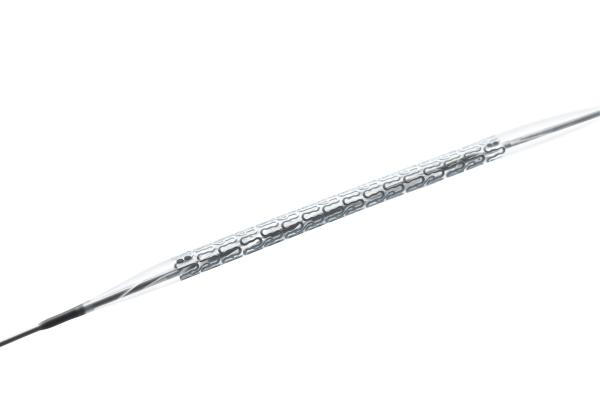
March 16, 2023 — Prof. Michael Haude, BIOMAG-I Coordinating Clinical Investigator, presented the latest results of the BIOMAG-I clinical study at the Cardiovascular Research Technologies (CRT) meeting.1 At six months the angiographic and clinical data showed a low in-scaffold late lumen loss (LLL) rate and a good safety profile with no scaffold thrombosis. A low proportion of mal-apposed struts after implantation was observed, at six months struts were no longer discernable. The intravascular imaging documented a preservation of the scaffold area with a low mean neointimal area.
Bioresorbable scaffolds have been developed to provide temporary mechanical support, while controlling neointimal proliferation over the vascular healing period and preventing long-term stent-related adverse events. DREAMS 3G, BIOTRONIK’s next generation drug-eluting resorbable Magnesium scaffold (RMS), is made of a proprietary Magnesium alloy and maintains a resorption time of 12 months. Compared to its predecessor DREAMS 2G, it offers unique benefits such as reduced strut thickness and a higher radial strength.2
"DREAMS 3G did not only show a low in-scaffold late lumen loss (LLL) rate, we could also see the preservation of the scaffold area with mostly well-embedded and resorbing scaffold struts", said Prof. Michael Haude, Rheinland Klinikum, Neuss, Germany. "This third-generation scaffold is on the level of contemporary drug-eluting stents while providing the benefits of a resorbable scaffold."
The prospective BIOMAG-I clinical trial assesses the angiographic, clinical and safety performance of DREAMS 3G of 116 patients with de novo coronary artery lesions. 14 clinics in eight European countries are taking part in the BIOMAG-I clinical trial with 20% of the patients presented with NSTEMI and more than 75% with B2/C lesions.
"DREAMS 3G RMS combines new features showing benefits for patient with de novo obstructive coronary artery disease in the BIOMAG-I trial", said Georg Nollert, MD, PhD, Vice President Medical Affairs, Vascular Intervention at BIOTRONIK. "As presented at the CRT congress by Dr. Masaru Seguchi, the OCT analysis of the BIOMAG-I revealed that underlying plaque tissue composition has no significant correlation with the very low coronary lumen loss of the scaffolded area at six-month follow-up. This suggests DREAMS 3G provides sufficient radial strength and scaffolding time to achieve excellent results in lesions of fibrous, calcific, and/or lipidic nature."
For more information: www.biotronik.com
References:
1 Haude M., Safety and performance of the third-generation drug-eluting resorbable coronary magnesium scaffold system in the treatment of subjects with de novo coronary artery lesions: 6-month results of the prospective, multicenter BIOMAG-I first-in-human study, presented at CRT 2023.


 October 16, 2024
October 16, 2024 








